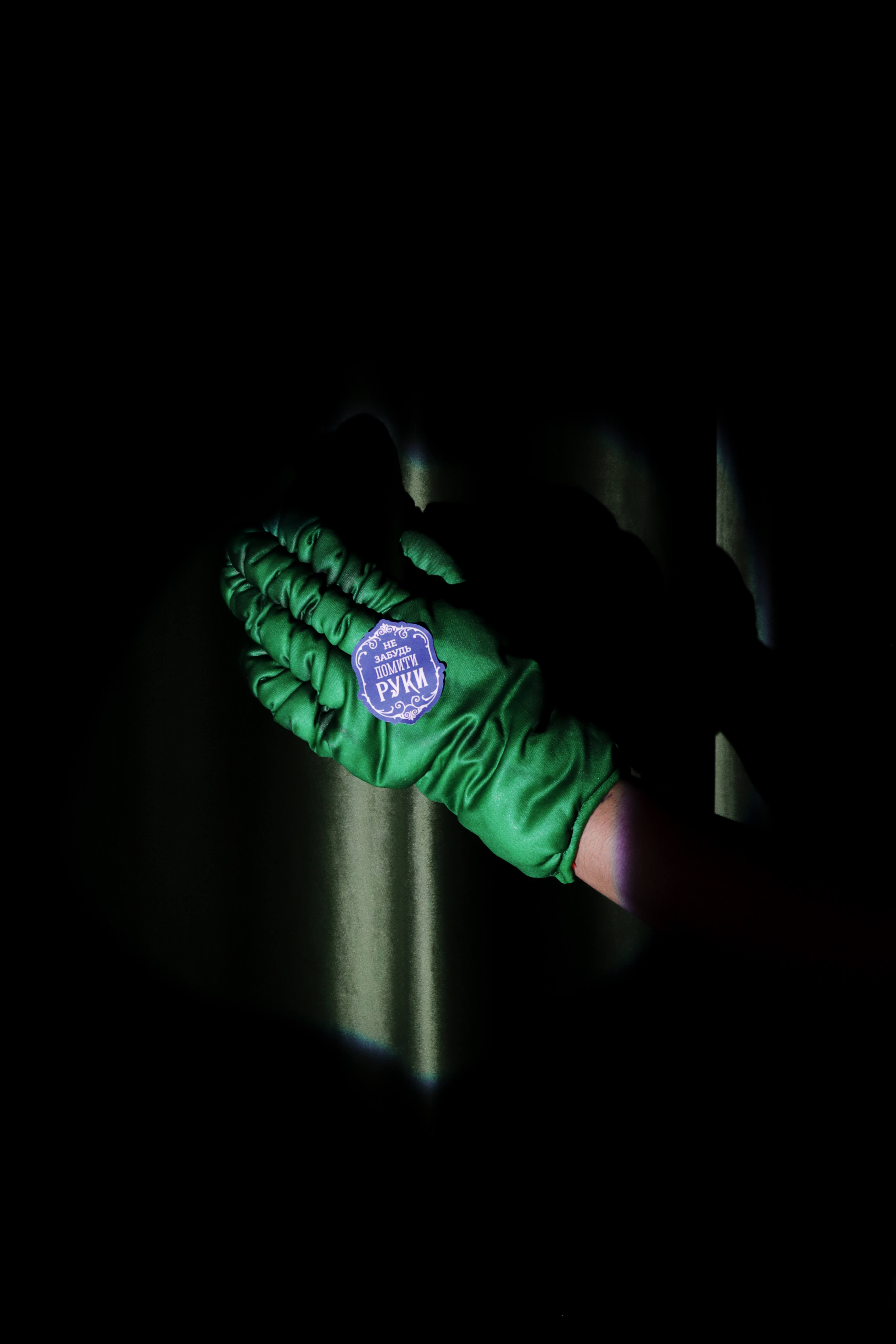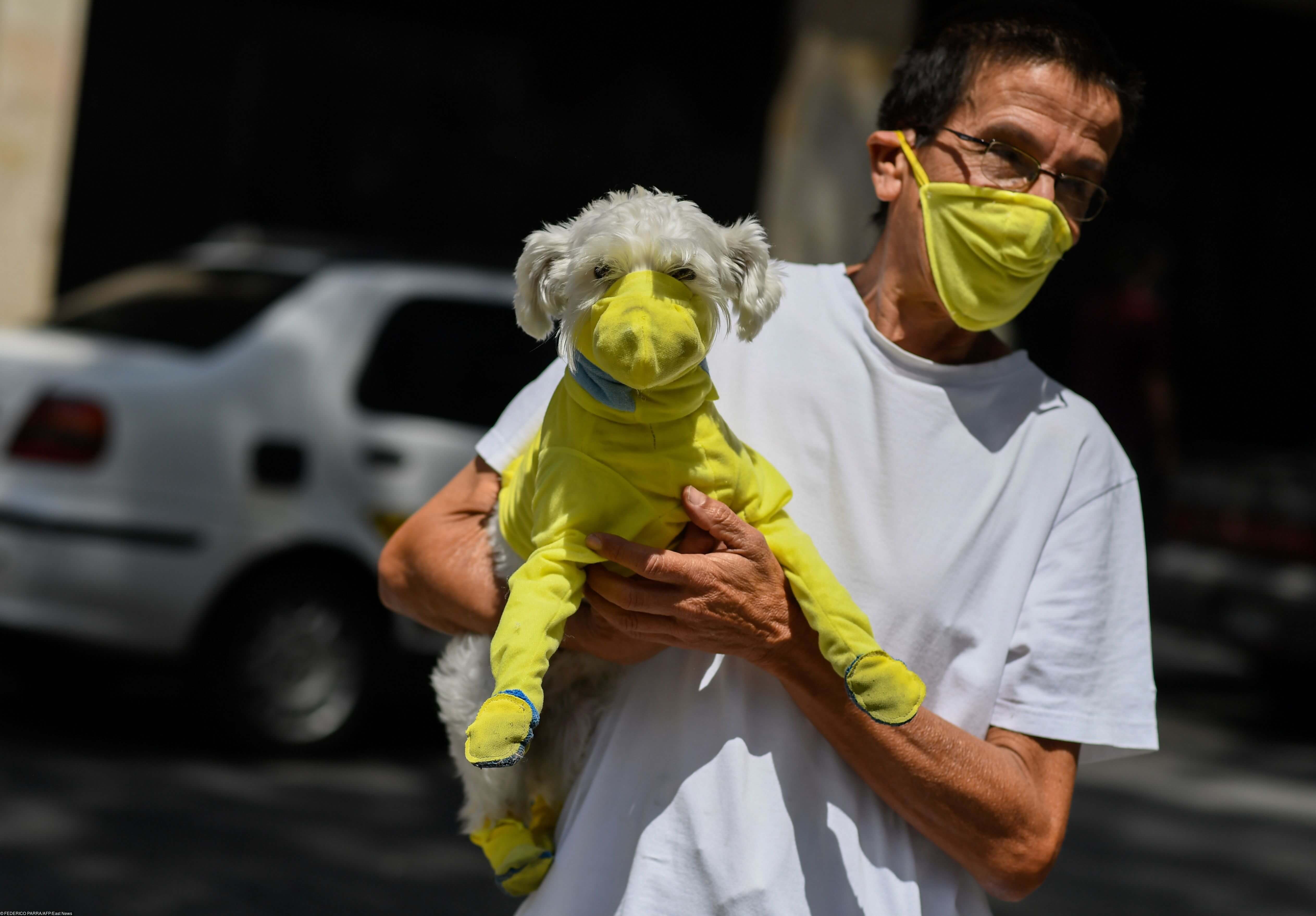Beyond Wuhan Markets: How People Propagate Viruses Themselves

Snake whiskey. Laos. Photo: Depositphotos / diy13@ya.ru
If you mine for gold for long enough, you’ll meet the dragon.
(с) Gnomes
The animal markets of Asia that are now famous all over the world appeared spontaneously at some point, amid the post-war hunger — to replenish the losses in agriculture with natural resources. However, what was originally small village fairs, today turned into an entire industry with a large turnover. At these markets you can now have a lunch of a half-alive octopus and buy a piglet that was carved next to a box full of flying foxes. Markets are filled with filthy cages with habitants of forests and seas. You can find alive and dead animals here, and their body parts. All of it can be eaten, drunk, rubbed into the skin, applied on the hair, put on the table, and worn around the neck for luck. That’s what people pay for. And as a free bonus they got the Ebola virus, HIV, SARS, avian and swine flu.
According to some estimations, up to 60% of new infectious diseases that strike people are zoonotic: we get them from animals. And over two-thirds of them are from wild fauna that we have grown comfortable to use for our needs.
And here we discover that thing that can be discovered without flying into space with a red cat and Sigourney Weaver — even without the aliens we are a living space and a resource for someone. Someone who we continuously awaken: either by familiar ways, or by inventing new ways of interaction with wild animals. Modern science calls this emerging infectious disease (EID).
Let’s look at some examples.
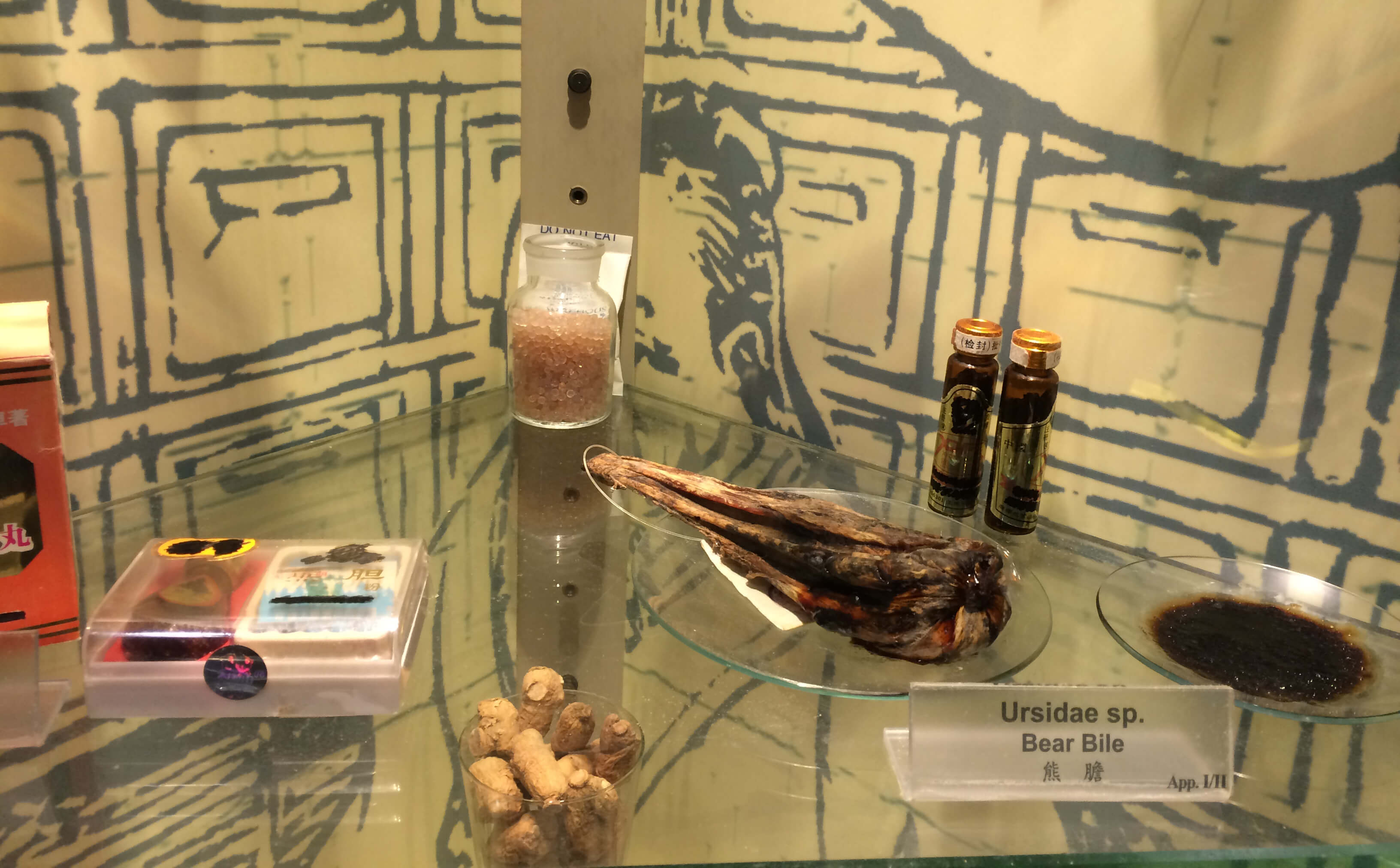
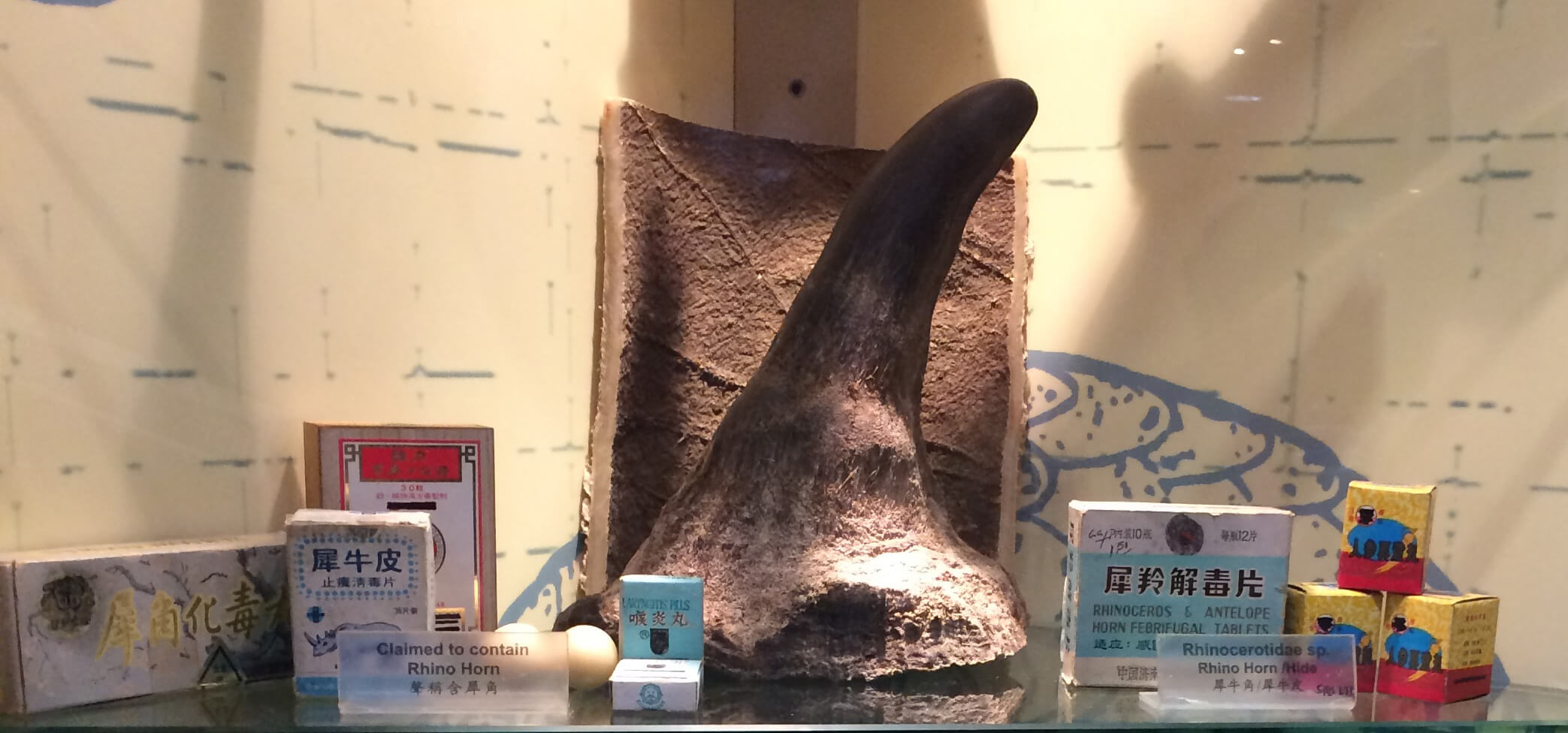
Products from bear bile and rhino horn confiscated by Hong Kong authorities. Photo: Hong Kong’s Agriculture, Fisheries and Conservation Department Visitor Center
Humans Look for Entertainment
2003. Police operation to free Pony, a female orangutan. Chained to a wall, defenseless, covered in wounds from daily shaving and bug bites, the female was found on dirty mattresses in the brothel of an Indonesian village. Pony served as exclusive entertainment for perverts and a source of income for people in the provincial village of Kareng Pangi, Central Kalimantan. Sort of a village-forming enterprise. The female orangutan was raped daily for six years. Her parents were most likely killed and used as bushmeat (what goes on the table of the hunter themselves and also into the markets of food products and derivatives — pretty things like a ray purse or a gorilla hand ashtray).
It was the traditional use of great apes for food and trophies (and of course, the ways those items are manufactured) that allowed the virus that used to peacefully coexist with primates to mutate. Somewhere in the early 20th century, this pathogen — simian immunodeficiency virus (SIV) caused a pathogenic process in an unknown chimpanzee hunter in Central Africa. By this time, counting from the first registered case in 1981, between 35 and 50 million people died from the disease induced by HIV, with about a million dying annually.
As a free bonus we got Ebola virus, HIV, SARS, avian and swine flu.
Humans Keep Domestic Animals
In 1999, about one hundred people in Nipah settlement in Malaysia died of a new severe respiratory infection accompanied by encephalitis. As it turned out, they got the previously unknown henipavirus from swine. And the swine, in turn, got it from flying foxes living in the pigpen. Later, these events inspired the 2011 film Contagion.
There have already been 12 outbreaks of the disease caused by this virus since it was discovered for the first time. It gradually expanded geographically, and mutated to be airborne to other domesticated animals and from human to human. Flying foxes from Africa to Australia have this virus. And the only barrier on its ‘way to success’ became, strangely, high mortality — between 40% and 100%: this was what prevented the virus from being transmitted further.
Humans Travel
Recently, in 1999, mass deaths of birds took place in the US: they literally dropped dead from the sky. Soon people along with other mammals also started to get sick.
It turned out that mosquitoes who carry the flavivirus that causes West Nile fever were brought into the country through trade. Over 300 species of Northern American birds were susceptible to the new virus. Some of them persevered, but became the reservoir hosts of the virus, and in twenty years the pathogen took over almost the entire territory of the continent — except Alaska. As a result, hundreds of thousands, if not millions of birds died. Crows disappeared from the suburbs of Maryland, Baltimore, and Washington — between 45% and 90% of birds that populated these territories were dead; the bald eagle, the emblem of the United States, became endangered again. With people, despite the radical measures taken to contain the epidemic about 51 thousand people got sick and about 5% of them died.
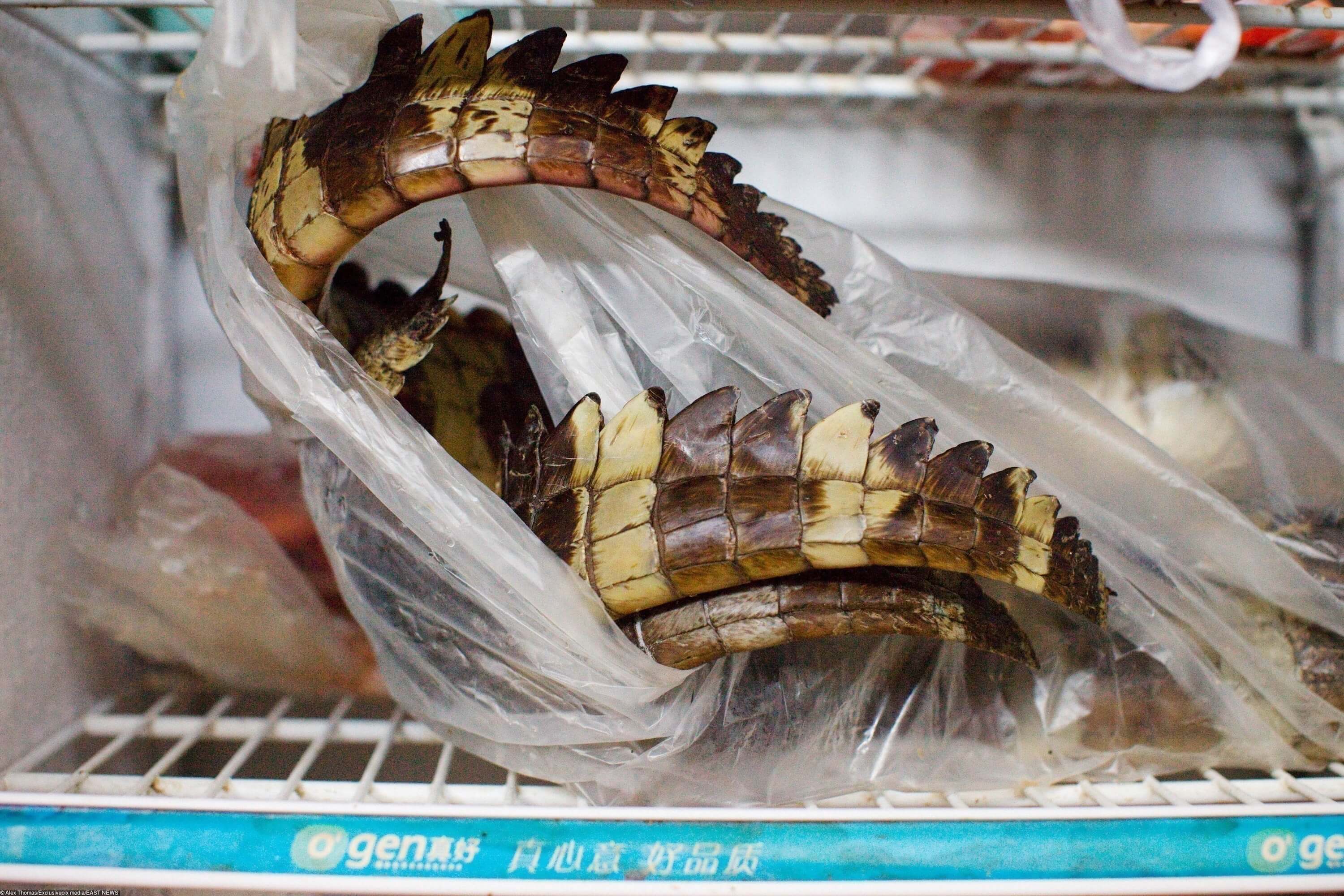
Crocodile tails discovered in one of restaurants in China during inspection. Guangzhou. Photo: Alex Thomas / Exclusivepix media / East News
Humans Search for Food
Due to the rodents’ way of life, rodent intestines historically contain microorganisms that get there from the soil. And people have always eaten food in this or the other way contaminated by rodent feces, and got intestinal infections of various severity.
However, at some point at least 20 thousand years ago there was a microscopic evolutionary leap that has changed the world. In the intestines of the unknown sumer (or his dog) yersinia met baculovirus that added something new to the genome of this bacteria: the ability to penetrate the wall of the flea’s gizzard. That was when the plague successfully started it’s crusade against civilization.
As a result of this mutation, it is not a simple intestinal infection anymore — the disease has taken 150 million lives.
Even in our times, the plague adds 200 deaths annually.
Chinese businessmen may not believe in the curing power of the rhino horn, but it is a symbol of success and a general set of values.
2016, Altai Krai. A grandson comes to his grandparents for the weekend, and they ask him to help them carve groundhogs to eat. The locals eat these animals — they are said to be a lot of fun to catch and very tasty. The boy, in severe condition, was brought to Kosh-Agach village hospital.
2017. A dying dog with pneumonia was brought to one of the veterinary hospitals of Colorado. The owner saw how several days ago his pet ‘sniffed’ a dead prairie dog (a local rodent). The vets who examined the dog followed the official protocol but neglected personal safety because they didn’t believe (!) the test results. As a result, four people fell seriously ill and another 112 risked being infected.
These days, the plague can meet humans in different guises, whether that of a prairie dog, a groundhog barbecue, or a dead camel.
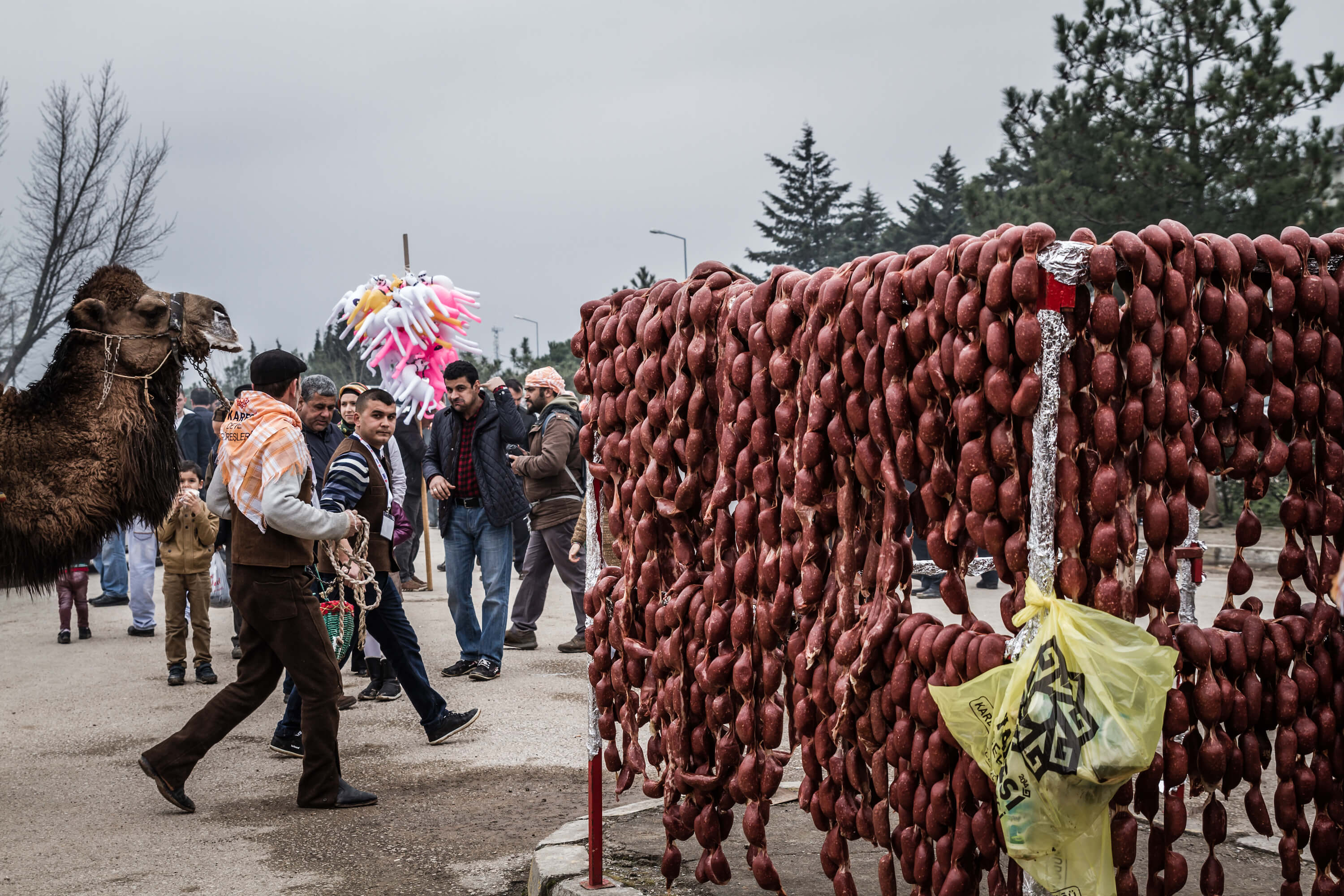
Products from camel meat at the local market during the camel fight festival. Turkey. Photo: Depositphotos / hskoken
Humans Search for Happiness
All of us believe in miracles. Cure cancer, regain potency, maintain sexual interest in our partner, show off an expensive object that confirms our status to receive respect from others.
Chinese businessmen may not believe in the curing power of rhino horn, but they know that their business partners perceive this thing on the table as a symbol of success and a general set of values.
Bear bile slightly improves digestion, but in general is not as effective as the cheapest pharmaceutical alternative. Nevertheless, to obtain this bile thousands of bears in Asia are taken from their natural habitats, and animals remain for years crucified in corset cells with a permanent catheter installed to extract the ‘elixir.’ Instead of 30-40 years of free life — 5-6 years living in filth, pain, and infections.
According to the UN, the annual turnover of wildlife trade amounts to 20 billion dollars.
Photo with a lemur. Exotic pet on Instagram. A child wants to pet a lemur ‘from the cartoon,’ and entertainers offer a service ‘pet for an hour.’ You can get a leopard or a python if you want. You can open your ‘zoo’ in a hotel, no problem.
The legislation basically equals zoological parks that save nearly extinct species with private collections for commerce and pleasure.
“See what’s on the certificate? “Bred in captivity.’ But I know for sure where I’m bringing them from,” with these words a trader who is importing a group of monkeys into Ukraine winks the animal rights activist who presented himself as a potential buyer. The trader means Congo. Sometimes, ‘legally’ imported for Ukrainian lovers of exotic things primates die. And sometimes, an expert gets an opportunity to investigate the cause of their death. The cause can be identified — as acute pneumonia, but the virus that caused it — can’t. Neither its further fate among those dozens of people who took part in primate trade is known.
Maybe, some person is now bored during quarantine, watches lots of funny videos about raccoons and lemurs, finds an ad and presses the button ‘buy a monkey.’ What can go wrong with that?

Print screen of an ad selling a monkey on olx.ua. Ukraine
Summing Up
Any living organism can do two things: process resources and take over and control the space where those resources come from. In the case of viruses, this ‘promised land’ lies in the body of another living being — for instance, a human. And the virus will continue to mine gold in newly discovered El Dorado for as long as the local population and their resistance level will allow it. Ideally, pathogens don’t want to die in the new environment and try to steal resources discreetly, without unnecessary casualties. The main question is how many new hosts of the pathogen will die before the evolutionary mechanisms make it less deadly.
The reason we should worry is the following. Such viruses and the diseases they cause can spread extremely quickly. And change constantly and stochastically. We can’t even always estimate the time we need to understand their characteristics. We are always one step behind.
The ‘old white males’ of world politics react inertly, and society gladly supports them. According to the modest estimations of the World Bank, a serious flu pandemic can cost the world economy over 3 trillion US dollars. However, spending money in advance on preventive measures is not popular with the electorate. As a result the very thing that everybody is so afraid of happens — people die and the socio-economic aftermath that everybody feared takes place and brings new losses.
There is never a good time for a plague.
P. S. Due to the limitations of this article and our peace of mind, we apologize to rabies, Zika and Ebola viruses, Lyme disease and many other diseases that became dear to us thanks to the inexplicable wish of humans to have too close, unhealthy ties with wild nature.
New and best
